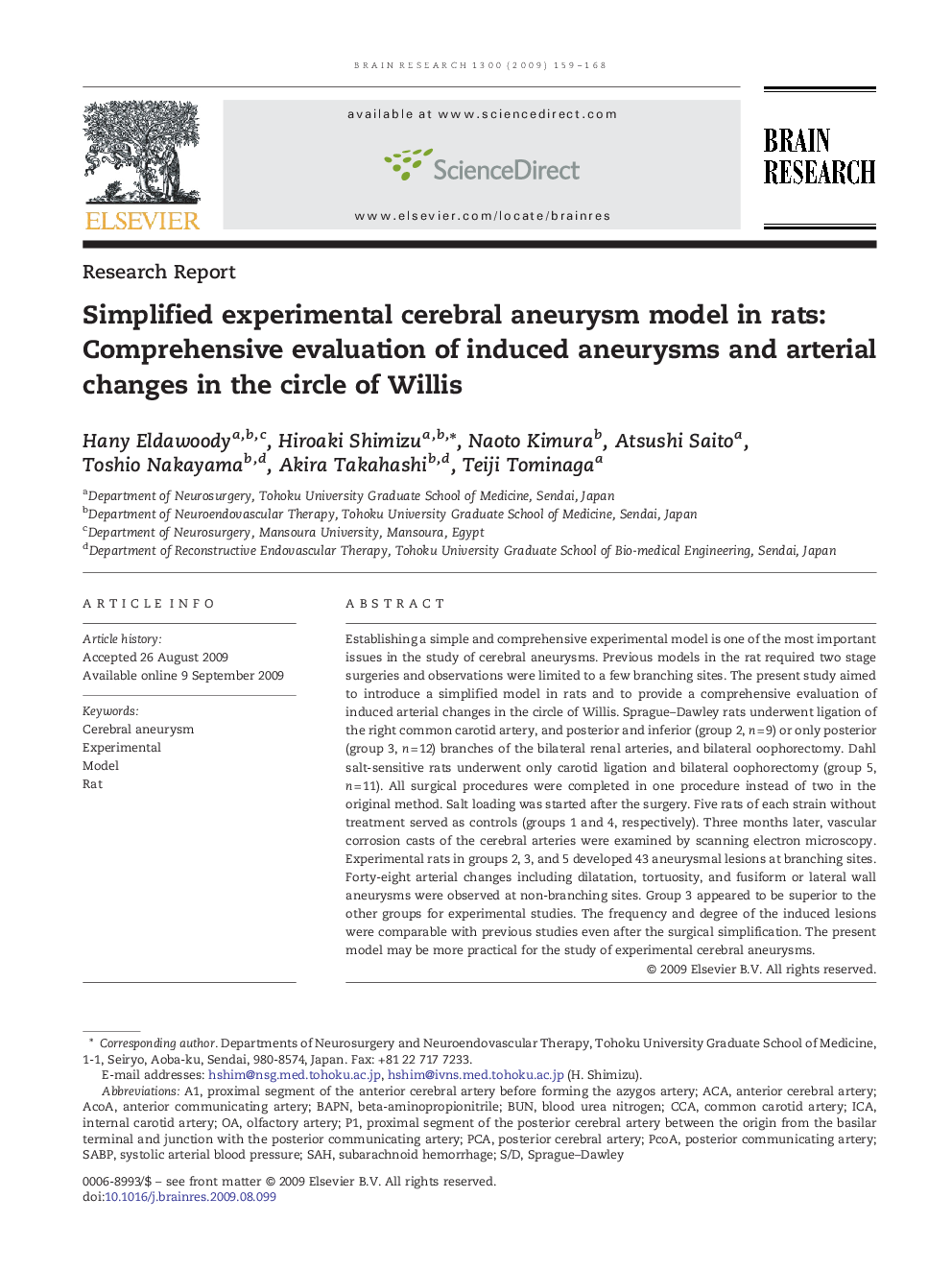| Article ID | Journal | Published Year | Pages | File Type |
|---|---|---|---|---|
| 4327696 | Brain Research | 2009 | 10 Pages |
Establishing a simple and comprehensive experimental model is one of the most important issues in the study of cerebral aneurysms. Previous models in the rat required two stage surgeries and observations were limited to a few branching sites. The present study aimed to introduce a simplified model in rats and to provide a comprehensive evaluation of induced arterial changes in the circle of Willis. Sprague–Dawley rats underwent ligation of the right common carotid artery, and posterior and inferior (group 2, n = 9) or only posterior (group 3, n = 12) branches of the bilateral renal arteries, and bilateral oophorectomy. Dahl salt-sensitive rats underwent only carotid ligation and bilateral oophorectomy (group 5, n = 11). All surgical procedures were completed in one procedure instead of two in the original method. Salt loading was started after the surgery. Five rats of each strain without treatment served as controls (groups 1 and 4, respectively). Three months later, vascular corrosion casts of the cerebral arteries were examined by scanning electron microscopy. Experimental rats in groups 2, 3, and 5 developed 43 aneurysmal lesions at branching sites. Forty-eight arterial changes including dilatation, tortuosity, and fusiform or lateral wall aneurysms were observed at non-branching sites. Group 3 appeared to be superior to the other groups for experimental studies. The frequency and degree of the induced lesions were comparable with previous studies even after the surgical simplification. The present model may be more practical for the study of experimental cerebral aneurysms.
